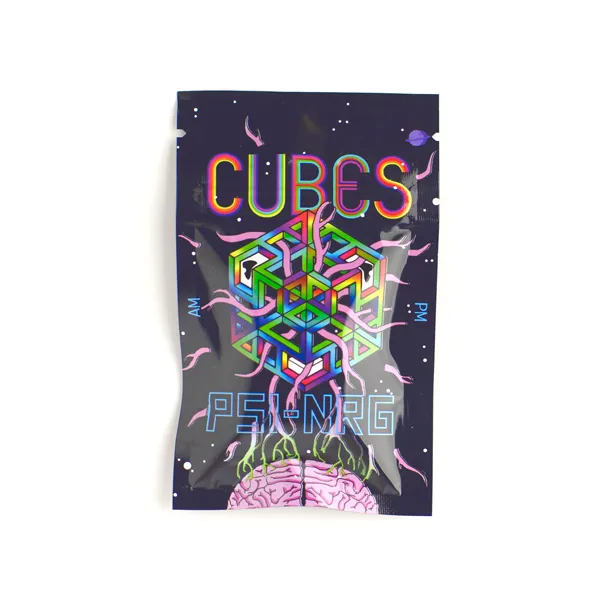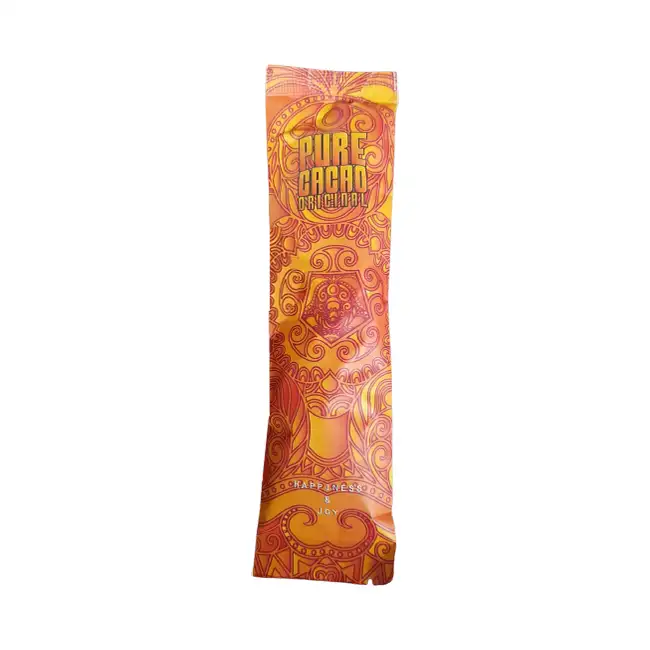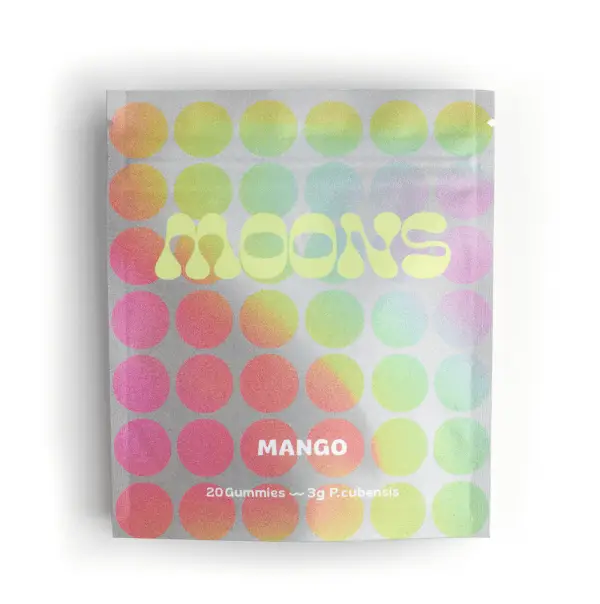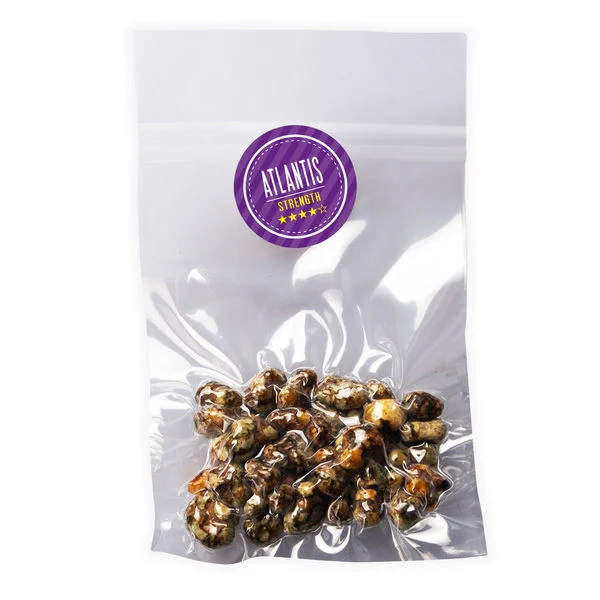The interest in magic mushrooms and their primary psychedelic compound, psilocybin, has skyrocketed in recent years as a potential therapeutic approach [1]. Primarily found in fungal species within the genus Psilocybe, psilocybin is an indole alkaloid responsible for the hallucinogenic effects of magic mushrooms [1][2].
Determining the appropriate magic mushrooms dosage is crucial for achieving the desired experience, whether for spiritual ceremonies, recreational use, or potential medical benefits [1][2]. This article explores factors influencing dosage, provides guidelines for different magic mushrooms doses, including microdosing magic mushrooms, and emphasizes the importance of responsible use and safety measures.
Understanding Magic Mushrooms
What Are Magic Mushrooms?
Magic mushrooms, also known as psilocybin mushrooms, are a diverse group of fungal species that contain psychoactive compounds capable of inducing altered states of consciousness and hallucinations. [6] [7] [8] The most prominent genera containing magic mushrooms are Psilocybe, Panaeolus, Pluteus, Gymnopilus, Amanita, Copelandia, Inocybe, and Pholiotina. [3]
Active Compounds in Magic Mushrooms
The primary psychoactive substances found in magic mushrooms are psilocybin and psilocin. [5] [6] Psilocybin (4-phosphoryloxy-N,N-dimethyltryptamine) is a prodrug that is metabolized into psilocin (4-hydroxy-N,N-dimethyltryptamine) after ingestion. [5] Psilocin is a serotonergic hallucinogen that interacts with 5-HT1A, 5-HT2A, and 5-HT2C receptor subtypes in the brain, altering perception, mood, and inducing hallucinations. [5]
Legal Status and Safety Considerations
The legal status of magic mushrooms varies across different jurisdictions. In many countries, including the United States, the United Kingdom, and Canada, psilocybin and psilocin are controlled substances, and the possession, cultivation, and distribution of magic mushrooms are illegal. [6] [7] However, some jurisdictions, such as Oregon, the District of Columbia, and certain cities in Colorado, have decriminalized or legalized the use of psilocybin mushrooms for therapeutic purposes under specific conditions. [6] [7] [8]
Despite their illegal status in many regions, magic mushrooms are generally considered non-addictive and have a low risk of overdose. [3] However, their use can still pose risks, including adverse psychological reactions, particularly in individuals with pre-existing mental health conditions. [3] It is crucial to exercise caution and responsible use when consuming magic mushrooms and to seek professional guidance if considering their therapeutic potential. [3]
Factors Affecting Dosage
The effects of magic mushrooms can vary significantly due to several factors, including the potency and strain variations, individual tolerance and experience, and the set and setting. [10] [11] [12] [13] [14]
Potency and Strain Variations
The potency of magic mushrooms is influenced by the specific species and strain, as well as the concentration of active compounds like psilocybin and psilocin. [10] [14] Different magic mushrooms strains can have varying levels of these psychoactive substances, leading to variations in the intensity of the effects. [10] Additionally, the growing conditions, such as climate, soil composition, and cultivation methods, can impact the potency of the mushrooms. [10]
Individual Tolerance and Experience
An individual’s body weight, metabolism, and level of tolerance can significantly affect the dosage required to achieve the desired effects. [11] [12] [14] Individuals with a higher natural tolerance may require higher doses to experience the same effects as those with lower tolerance levels. [11] [12] Furthermore, an individual’s mindset, expectations, and previous experiences with psychedelics can influence the subjective experience. [11] [12]
Set and Setting
The set and setting, which refer to an individual’s mindset and the physical and social environment in which the experience takes place, play a crucial role in determining the quality and intensity of the psychedelic experience. [9] [11] A positive and supportive set and setting can enhance the potential benefits and minimize the risks associated with magic mushroom use. [9] Conversely, a negative or uncomfortable set and setting can increase the likelihood of adverse reactions or challenging experiences. [9] [11]
It is essential to consider these factors when determining the appropriate dosage of magic mushrooms to ensure a safe and desired experience. [11] [12] [13] [14] Consulting with experienced individuals or professionals in the field can provide valuable guidance on dosing and responsible use.
Magic mushrooms Dosage Guidelines
Many earlier psilocybin trials were initially dosed using body weight, with doses generally ranging from 0.2–0.4 mg/kg of psilocybin per session. [17] Protocols consisted of either a single dose or two doses separated by an average 3–4 week washout period. Current clinical trial protocols have switched to using a fixed psilocybin dose, most commonly 25 mg, which is consistent with the previous 0.3 mg/kg weight-based dosing. [17] The fixed 25 mg dose approach has been validated in a recent secondary analysis of prior trial data, which found no significant differences in psychedelic effects compared to weight-based doses of 0.29 mg/kg and 0.43 mg/kg. [17]
Microdosing Regimen
As mentioned above, an average microdose is 10 to 20 percent of a full or recreational dose. [15] Dr. Fadiman considers a standard microdose to be one/tenth (10 micrograms) of a full dose. [15] To avoid building up a tolerance to your dose, which decreases effectiveness, Dr. Fadiman recommends a regimen of one day on and two days off. [15] The Fadiman protocol suggests continuing the cycle of one day on, two days off for four to ten weeks, then abstaining from the drug for two to four weeks before resuming the process, especially for high-dose psychedelic experimentation. [15]
Typical doses can be as small as one twentieth of a typical recreational dose, sometimes even less. [16] So, for example, a microdose of psilocybin might be 0.1 to 0.5 grams of dried mushrooms. [16] People follow a variety of different schedules when microdosing, sometimes taking a dose each day but much more frequently interspersing dosing days with rest days. One common schedule is to microdose every three days. [16] The idea behind this regimen is that there may be a residual effect from each microdose that lasts one to two days afterwards. [16]
Moderate Dose Range
Recreational doses range from 1–5 grams of dry mushrooms depending on the species and individual strength of the specimens. [18] Dosages for fresh mushrooms will be approximately 10 times higher (10–50 grams). [18] The subjective effects, however, may vary greatly between individuals and from one episode of use to the next within the same person. The effects range from mild feelings of relaxation, giddiness, euphoria, visual enhancement (seeing colours brighter), visual disturbances (moving surfaces, waves), to delusions, altered perception of real events, images and faces, or real hallucinations. [18]
Higher Dose Range
The aim of one study was to investigate the relationship between escalating higher doses of psilocybin and the potential psilocybin occasioned positive subjective effects. [19] Healthy participants (n=12) were given three escalating doses of oral psilocybin (0.3 mg/kg; 0.45 mg/kg; 0.6 mg/kg) or (18.8–36.6 mg; 27.1–54.0 mg; 36.3–59.2 mg) a minimum of four weeks apart in a supervised setting. [19]
High doses of psilocybin elicited subjective effects at least as strong as the lower doses and resulted in positive persisting subjective effects 30 days later, indicating that a complete mystical experience was not a prerequisite for positive outcomes. [19] Results revealed a significant linear dose-related response in MEQ total score and the transcendence of time and space subscale, but not in the rate of a complete mystical experience. [19] Comparisons between the three doses revealed a significant difference between dose 3 and dose 1 on the transcendence of time and space subscale, though there were no differences in MEQ total scores or rate of a mystical experience. [19]
PEQ positive composite scores 30 days after completion of the last dose were significantly higher than negative composite scores. [19] PEQ results also revealed a moderate increase in sense of well-being or life satisfaction on average that was associated with the maximum MEQ total score. [19] Results suggest that even without differential effects of dose on the rate of a “complete” mystical experience, positive persisting effects were achieved following these higher doses of psilocybin. [19]
Another trial is the first of its kind to thoroughly investigate the simultaneous administration of psilocybin to multiple participants. [20] 89 healthy participants with no recent (within 1 year) use of psilocybin were recruited. 60 individuals were randomly picked to receive either a 10mg or 25mg dose of psilocybin in a controlled environment. [20] Throughout the study, there were no instances of anyone withdrawing from the study due to an adverse event, and no consistent trends to suggest that either of the psilocybin doses had any short- or long-term detrimental effects on participants. [20]
Responsible Use and Safety Tips
Preparing for the Experience
When preparing for a psilocybin experience, it is crucial to create a safe and supportive environment, often referred to as the “set and setting.” [21] Trainers emphasize that the space should include comfortable seating or mats, eye masks, blankets, stuffed animals, and art supplies for self-expression. [21] Music is also an integral part of the experience and should be available through speakers or headphones. [21] Researchers at the Johns Hopkins Center for Psychedelic and Consciousness Research have developed a playlist that aims to complement the typical psilocybin session. [21]
Participants should be given the freedom to explore and express any emotions that emerge during their inner journey without judgment or consolation. [21] While expressing anger is acceptable, there should be an agreement beforehand to avoid throwing objects or physical aggression. [21] The facilitators’ role is not to guide but to allow participants’ experiences to unfold naturally, using words sparingly and encouraging participants to reach their own insights and conclusions. [21]
Potential Risks and Adverse Effects
While psilocybin is generally considered non-addictive and has a low risk of overdose, its use can still pose risks, particularly for individuals with pre-existing mental health conditions. [23] Potential adverse effects include confusion, fear, hallucinations, headache, high blood pressure, nausea, and paranoia. [24] Psilocybin may also increase the risk of mania in individuals with bipolar disorder or those with a family history of the condition. [24]
Individuals with heart disease may be at an increased risk of cardiac arrest and death due to psilocybin use. [24] Additionally, psilocybin may exacerbate symptoms in people with irritable bowel syndrome (IBS) by worsening diarrhea. [24] Psilocybin can interact with certain medications, such as those that increase serotonin levels, potentially leading to serious side effects like heart problems, seizures, and vomiting. [24]
Psychological distress, including extreme anxiety or short-term psychosis, is a potential adverse event after recreational use of psilocybin. [23] Some individuals may experience persistent, distressing alterations in their perception of the world, known as hallucinogen-persisting perception disorder (HPPD), which can last for weeks or even years after using the hallucinogen. [23] In rare cases, individuals may experience fear, agitation, confusion, delirium, psychosis, and syndromes resembling schizophrenia. [23]
Integrating the Experience
Researchers emphasize the importance of contextualizing the psilocybin experience within a therapeutic sequence, which includes preparation beforehand and integration afterward. [21] This approach aims to provide a platform for psilocybin services, where the experience is not isolated but rather part of a broader therapeutic process. [21]
The integration phase is crucial for processing and making sense of the insights and emotions that may have emerged during the psilocybin experience. [21] Facilitators can guide participants in reflecting on their experiences, identifying potential areas for personal growth or healing, and developing strategies for integrating any newfound perspectives or realizations into their daily lives. [21]
Conclusion
The exploration of magic mushrooms and their potential therapeutic applications has gained significant attention in recent years. While navigating the appropriate dosage is a complex endeavor influenced by various factors, responsible and informed use is paramount. It is essential to prioritize safety, create a supportive environment, and respect the profound experiences that these substances can facilitate.
By integrating the insights gained from psilocybin experiences into our daily lives, we may uncover new avenues for personal growth, healing, and profound shifts in perspective. As research continues to shed light on the therapeutic potential of these substances, it is crucial to approach this domain with openness, caution, and a commitment to expanding our understanding of the human psyche.
References
[1] – https://www.ncbi.nlm.nih.gov/pmc/articles/PMC9751063/
[2] – https://www.webmd.com/vitamins/ai/ingredientmono-1654/psilocybin
[3] – https://www.frontiersin.org/articles/10.3389/ffgc.2022.813998
[4] – https://www.ncbi.nlm.nih.gov/pmc/articles/PMC4364345/
[5] – https://www.emcdda.europa.eu/publications/drug-profiles/hallucinogenic-mushrooms_en
[6] – https://www.ncbi.nlm.nih.gov/pmc/articles/PMC9953455/
[7] – https://en.wikipedia.org/wiki/Legal_status_of_psilocybin_mushrooms
[8] – https://www.bbc.com/future/article/20240320-legal-status-of-psychedelics-around-the-world
[9] – https://www.ncbi.nlm.nih.gov/pmc/articles/PMC9751063/
[10] – https://www.canada.ca/en/health-canada/services/substance-use/controlled-illegal-drugs/magic-mushrooms.html
[11] – https://www.ncbi.nlm.nih.gov/pmc/articles/PMC8156539/
[12] – https://www.ncbi.nlm.nih.gov/pmc/articles/PMC10411500/
[13] – https://www.ncbi.nlm.nih.gov/pmc/articles/PMC7751062/
[14] – https://www.ncbi.nlm.nih.gov/pmc/articles/PMC8901083/
[15] – https://www.joyous.team/blog/guide-on-how-to-microdose
[16] – https://www.ncbi.nlm.nih.gov/pmc/articles/PMC6364961/
[17] – https://www.ncbi.nlm.nih.gov/pmc/articles/PMC9751063/
[18] – https://www.emcdda.europa.eu/publications/drug-profiles/hallucinogenic-mushrooms_en
[19] – https://www.ncbi.nlm.nih.gov/pmc/articles/PMC7751062/
[20] – https://www.kcl.ac.uk/news/psilocybin-in-10mg-or-25mg-doses-has-no-short-or-long-term-detrimental-effects-in-healthy-people
[21] – https://apnews.com/article/oregon-psilocybin-controlled-use-7ba7b1c5a2222877037300d6b3c37785
[22] – https://nida.nih.gov/research-topics/psilocybin-magic-mushrooms
[23] – https://www.medicalnewstoday.com/articles/308850
[24] – https://www.webmd.com/vitamins/ai/ingredientmono-1654/psilocybin
[25] – https://nida.nih.gov/research-topics/psilocybin-magic-mushrooms
[26] – https://www.sciencedirect.com/science/article/pii/S0955395920303352
[27] – https://www.ncbi.nlm.nih.gov/pmc/articles/PMC8056712/
[28] – https://www.oregon.gov/oha/PH/PREVENTIONWELLNESS/Documents/Psilocybin%20evidence%20report%20to%20OHA%206-30-21_Submitted.pdf
You Might Also Like These:




